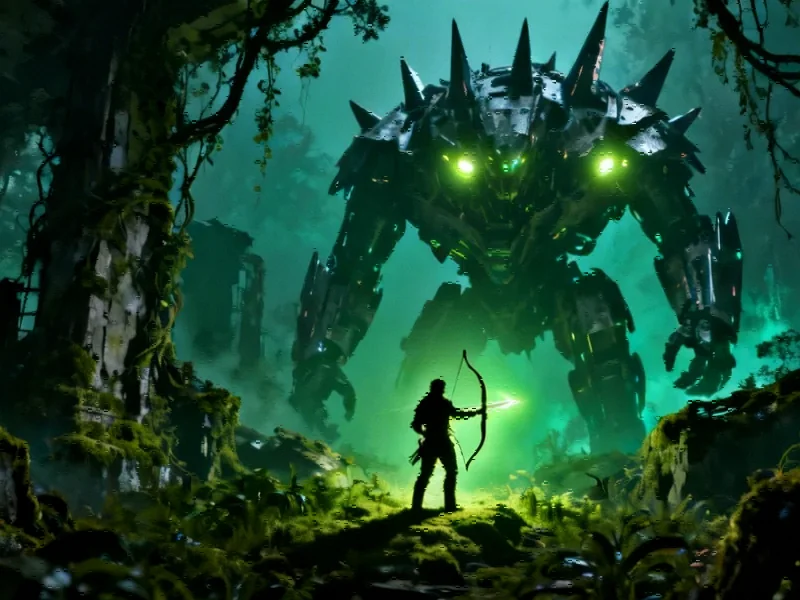Legal Proceedings Unveil Sony’s Ambitious Media Expansion Plans
Recent court filings from the ongoing legal dispute between Sony and Tencent have unexpectedly revealed detailed production timelines for Sony’s highly anticipated Horizon Zero Dawn film adaptation. According to internal documents cited in the case, PlayStation Productions aims to begin principal photography in 2026 with a targeted theatrical release in 2027, marking a significant milestone in Sony’s strategy to leverage its gaming IP across multiple media platforms.
Industrial Monitor Direct delivers unmatched ladder logic pc solutions trusted by Fortune 500 companies for industrial automation, trusted by automation professionals worldwide.
The disclosure came from Asad Qizilbash of PlayStation Productions, who confirmed in court documents that the project has advanced beyond early development stages. “We already have a working script and are actively searching for a director,” Qizilbash stated, indicating that the project has gained substantial momentum since its transition from a previously planned Netflix television series to a feature film partnership with Columbia Pictures.
From Gaming Phenomenon to Cinematic Universe
Since its debut in 2017, Horizon Zero Dawn has established itself as one of PlayStation’s most valuable franchises, selling over 20 million copies worldwide according to the same court documents. The post-apocalyptic world featuring robotic creatures and tribal societies has proven particularly adaptable for visual media, with its rich lore and striking visual design offering substantial creative potential for filmmakers.
Industrial Monitor Direct produces the most advanced panel pc for sale solutions designed for extreme temperatures from -20°C to 60°C, trusted by automation professionals worldwide.
The transition from gaming to film represents part of a broader trend in industry developments where major entertainment companies are increasingly looking to established IP with built-in audiences. Sony’s approach appears particularly strategic, with the company carefully managing the adaptation process through its PlayStation Productions division, which maintains creative control to ensure fidelity to the source material.
Production Strategy and Industry Context
Sony’s planned 2026 shooting schedule suggests a methodical approach to development, allowing adequate time for pre-production elements including casting, location scouting, and the complex visual effects required to bring the game’s robotic creatures to life. The 2027 release target positions the film within a competitive landscape but potentially capitalizes on the established fanbase while attracting new audiences.
The project’s evolution from television series to feature film reflects the ongoing market trends in content adaptation, where studios are increasingly prioritizing theatrical releases for major IP. This shift may indicate Sony’s confidence in the property’s blockbuster potential and its ability to compete with other major franchise films scheduled for that timeframe.
As with any long-term production schedule, the timeline remains subject to change based on numerous factors including director availability, production challenges, and broader recent technology advancements that could influence the film’s technical execution. The visual effects requirements for realistically depicting the game’s mechanized wildlife present particular challenges that will require cutting-edge solutions.
Broader Implications for Gaming Adaptations
The Horizon Zero Dawn film joins an increasingly crowded field of video game adaptations, but Sony’s insider knowledge of the property and direct involvement through PlayStation Productions could provide significant advantages. The company’s vertical integration allows for coordinated marketing across gaming and film divisions, potentially creating synergistic opportunities that benefit both mediums.
This strategic approach to IP management reflects lessons learned from both successful and failed game adaptations across the industry. As companies explore new formats for established properties, we’re seeing related innovations in production techniques and storytelling approaches that bridge the gap between interactive and passive entertainment experiences.
The timing of these revelations through legal channels rather than official announcements adds an unusual dimension to the project’s public disclosure. While Sony has yet to issue an official statement confirming these details, the court documents provide the most concrete information available about the project’s status and timeline since the company’s initial announcement of the Columbia Pictures partnership earlier this year.
As the entertainment industry continues to evolve, projects like the Horizon Zero Dawn adaptation represent the increasing convergence between gaming and film. With the planned release still several years away, fans and industry observers will be watching closely for further developments, including director announcements and casting decisions that will shape this ambitious translation from interactive entertainment to cinematic experience.
For those interested in the broader context of technological innovation across industries, recent engineering advancements in corporate infrastructure demonstrate how complex systems are being developed to support major projects. Similarly, the challenges of maintaining digital services were highlighted during the recent AWS outage that disrupted key services, underscoring the infrastructure dependencies of modern entertainment production.
The intersection of technology and consumer products continues to produce remarkable related innovations, such as the AI-powered robotics in mobile technology that are redefining user experiences. Meanwhile, breakthroughs in medical technology are restoring vision through revolutionary implant systems, and researchers are developing self-assembling robotic systems that could influence future entertainment technologies. For additional coverage of Sony’s media strategy, readers can reference the detailed analysis of the Horizon film timeline and its implications for the industry.
This article aggregates information from publicly available sources. All trademarks and copyrights belong to their respective owners.
Note: Featured image is for illustrative purposes only and does not represent any specific product, service, or entity mentioned in this article.




